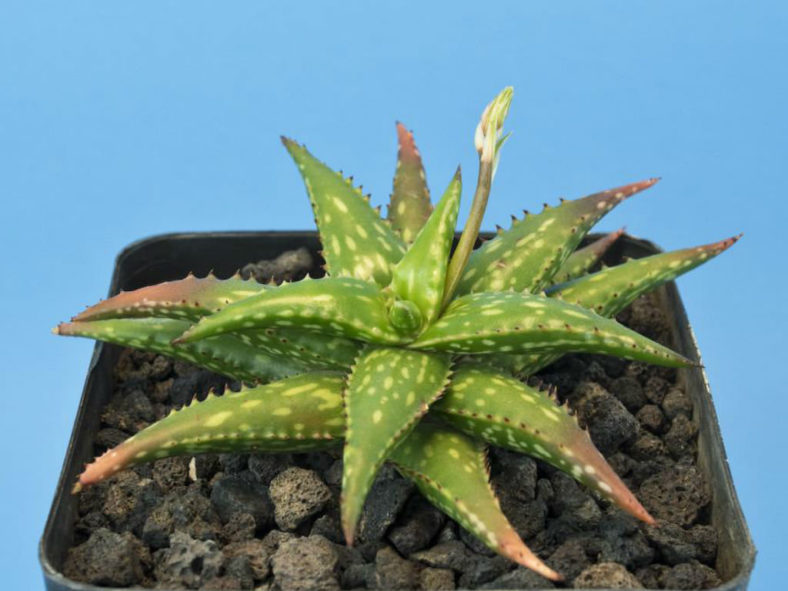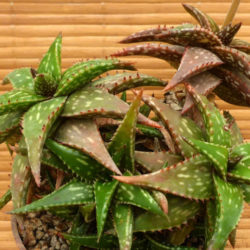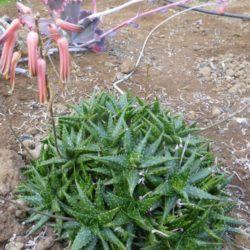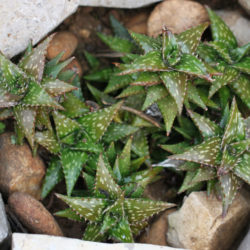Scientific Name
Aloe jucunda Reynolds
Scientific Classification
Family: Asphodelaceae
Subfamily: Asphodeloideae
Genus: Aloe
Description
Aloe jucunda is a small succulent plant that forms rosettes of spreading, shiny dark green leaves speckled with white spots and lines. It can grow up to 14 inches (35 cm) tall and offsets freely from the base, forming dense clumps. The rosettes can reach up to 3.2 inches (8 cm) in diameter. The leaves are triangular, have margins armed with hard triangular teeth, and measure up to 1.6 inches (4 cm) in length and 2 inches (5 cm) in width.
The dangling flowers are pale pink to coral pink, arranged in pretty lax racemes, and appear all year round whenever the growing conditions are adequate. They are up to 1.2 inches (3 cm) long and 0.3 inches (0.7 cm) in diameter. The inflorescences are simple and up to 14 inches (35 cm) tall.
Origin
Aloe jucunda is native to northern Somalia. It grows in dry forests on limestone at elevations ranging from 3.480 to 5,510 feet (1.060 to 1.680 m). Its distribution is limited to an area of about 30 km across the Ga'an Libah plateau.

Hardiness
USDA hardiness zone 9b to 11b: from 25 °F (−3.9 °C) to 50 °F (+10 °C).
How to Grow and Care
Aloes are very forgiving plants. However, as with all succulents, Aloe must never be allowed to sit in stagnant water, and the plant should be carefully monitored to watch for signs of overwatering.
Aloes are not particularly fast-growing and will only rarely need repotting. Repot plants in the spring that are tipping over their pots or have ceased growing. Use a fast-draining potting mix with one-third of sand or pebbles. When repotting a larger plant, dividing the root ball carefully is possible. Some kinds of Aloe will send off offsets that can be potted independently.
It needs intense, bright light. They can withstand full summer sun once acclimated. In the winter, provide bright light. It prefers warmer temperatures of 70 to 80 °F (21 to 27 °C) but will survive down to 40 °F (4.5 °C). Feed with a cactus fertilizer in the summer only. Suspend feeding in the winter as the plant goes dormant.
See more at How to Grow and Care for Aloe.
Links
- Back to genus Aloe
- Succupedia: Browse succulents by Scientific Name, Common Name, Genus, Family, USDA Hardiness Zone, Origin, or cacti by Genus
Photo Gallery
Click on a photo to see a larger version.



